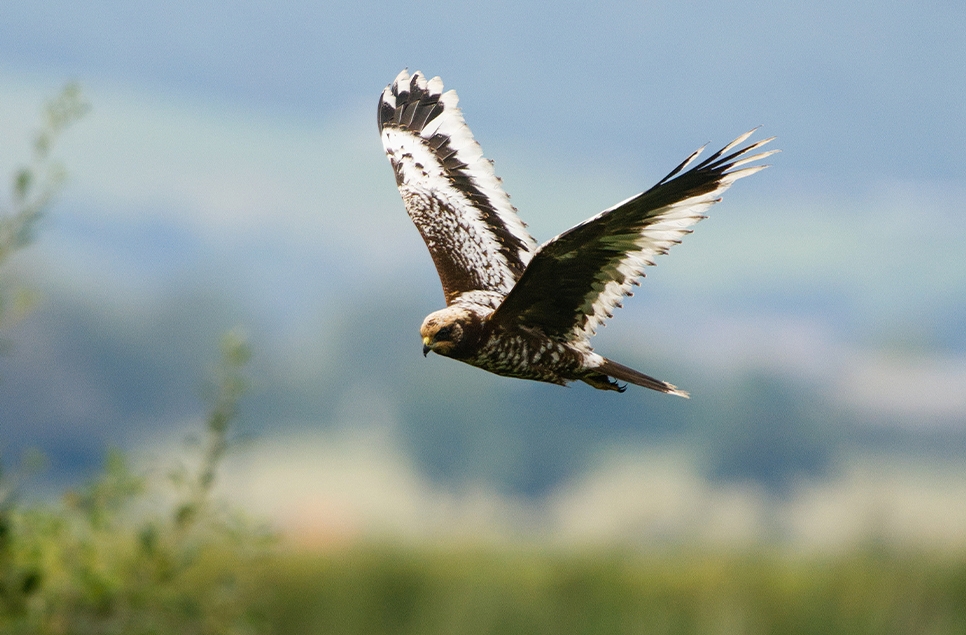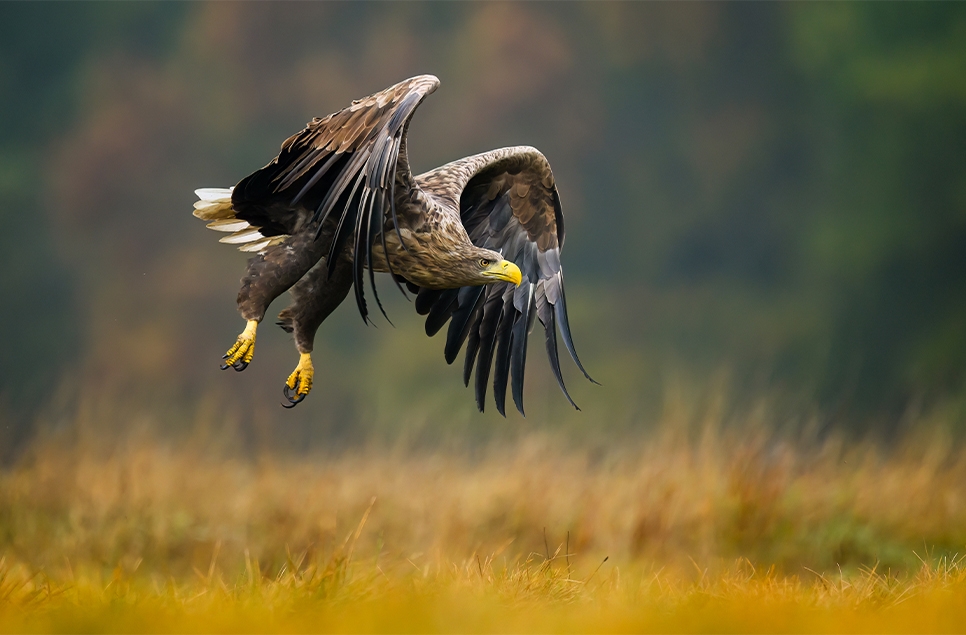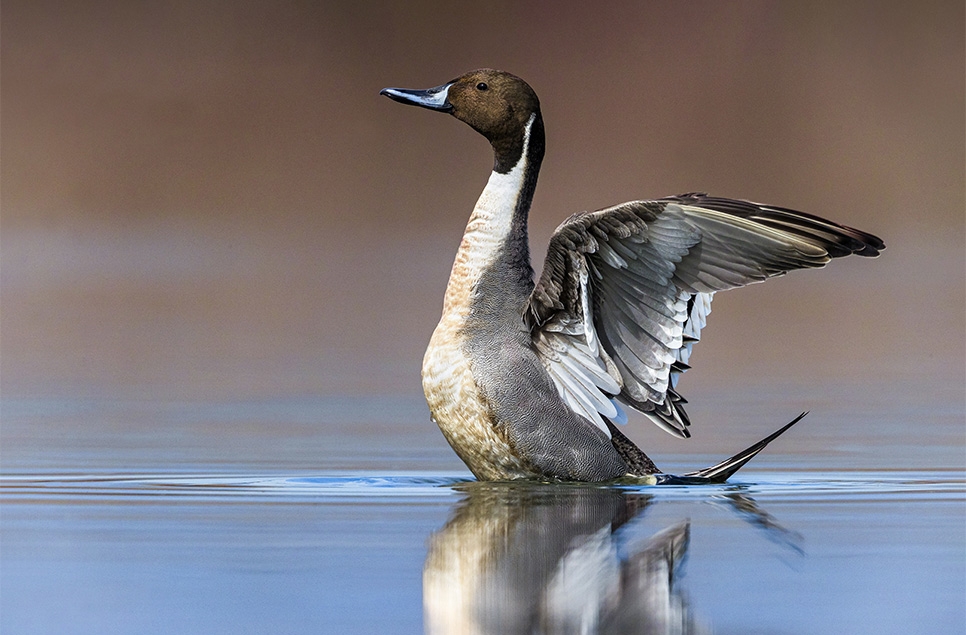A spotlight on wetland wildlife - September 2020
Come with us on a journey across our reserves during the busy month that was September. Birds are truly on the move with autumn migration in full swing and the weather is feeling just that little bit cooler. Summer visitors are gone and the next shift is
Come with us on a journey across our reserves during the busy month that was September. Birds are truly on the move with autumn migration in full swing and the weather is feeling just that little bit cooler. Summer visitors are gone and the next shift is settling in for the long winter months.
September is the time that birds are moving from their summer breeding grounds to their wintering grounds, on both sides of the Atlantic. Sometimes, westerly storms can push American birds across to us that wouldn’t usually be here! This is the case with the recent lesser yellowlegs found at Slimbridge:
Lesser Yellowlegs was on the South Lake again this morning, showing well but flew off high towards the river. It flew off high yesterday before reappearing so hopefully will be refound. All main hides covered this morning so we'll get news out as soon as we refind it #GlosBirds pic.twitter.com/q4V24XDn6Q
— Slimbridge Sightings (@slimbridge_wild) September 18, 2020
And the Martin Mere Wilson’s phalarope:
The Wilson's Phalarope is showing well this morning @WWTMartinMere from Ron Barker hide. It's flighty but coming very close to the hide @BirdGuides @RareBirdAlertUK https://t.co/QHcxQ5fL8E pic.twitter.com/iIyImzASkP
— Louise Clewley (@ClewleyLouise) September 30, 2020
Both species would normally be on their way to winter in central and south America.
Meanwhile at both Welney and Caerlaverock, juveniles of the less scarce red-necked phalarope dropped in for a few days, migrating south from breeding grounds in Iceland or northern Scandinavia.
Red-necked phalarope still on main lagoon this afternoon. Other highlights today include: little stint, redwing, pink-footed goose, cattle egret, great white egret, whooper swan. pic.twitter.com/mTWbxUgUmS
— WWT Welney (@WWTWelney) September 27, 2020
These birds are on their way to spend the winter on the Arabian Sea!
When birds get blown off course, they will look for refuge in suitable habitat for shelter and food. With climate change seeing more unsettled weather events throughout the year, it’s even more important that we protect our wetlands and keep them healthy so these birds have somewhere to go.
Old friends return
We’ve also welcomed back some of our more familiar winter visitors. Both Caerlaverock and Welney have seen numbers of whooper swan arrive, fresh from their Icelandic breeding grounds.
Our first 6 Whooper Swans have arrived overnight! Swan feeds will be different this winter, more information will be released next week #migration pic.twitter.com/rfG5QTljqP
— WWT Caerlaverock (@WWTCaerlaverock) September 26, 2020
The stars of winter have started to arrive today - 44 whooper swans on the main lagoon this morning, preening and drinking after thier migration from Iceland 😍
— WWT Welney (@WWTWelney) September 26, 2020
Other highlights - 32 crane, 8 cattle egret, 8 great white egret, 50 ruff.
📷 Stock image by Georgette Taylor pic.twitter.com/sUm5qT5RKA
With Caerlaverock reporting another Icelandic breeder; pink-footed geese over the reserve:
Skeins of pink footed geese are starting to arrive! #wildgoosefestival2020 https://t.co/a7ikwyAvqq https://t.co/9CIFVQRSQE Photo credit: Alex Hillier pic.twitter.com/UfIsXlPuhI
— WWT Caerlaverock (@WWTCaerlaverock) September 11, 2020
And there are now over 10,000 at Martin Mere! Volume up!
10,000+ Pink-footed Geese at @WWTMartinMere Lancashire on Sunday, recently arrived from Iceland.
— Phil Barnett (@squinancywort1) September 29, 2020
a bona fide wildlife spectacle!
and a very impressive sound
what's the loudest sound I've ever heard made by living things?
67,000 humans Old Trafford - then these geese! pic.twitter.com/STu9VAMlWD
Another bird returning for the winter is the bitterns at London – they’ll spend their time in the extensive reed beds, hunting for fish and amphibians.
Our Reserve Warden Jake spotted his first bittern this year!😊 He saw one hiding on the main lake North shore (best viewed from Dulverton Hide).#BecauseImALondoner #wwtlondon #wwt #wetlands pic.twitter.com/Vo8l8PtmVN
— WWT London Wetland Centre (@WWTLondon) September 28, 2020
Back at Welney and they’ve regularly been enjoying high numbers of common crane on Lady Fen.
26 cranes on Lady Fen at the moment, 6 cattle egret, 5 great white egret, wood sandpiper, green sandpiper, common sandpiper, ruff, snipe, lapwing, hobby, sand martin, pintail, tufted duck, wigeon, shoveler, teal so far #rbnNFK pic.twitter.com/5046thLkur
— WWT Welney (@WWTWelney) September 17, 2020
These birds are gathering in a post-breeding flock to feed up, ready for the winter.
It's not just birds being seen this autumn
Caerlaverock have been finding all sorts of slippery characters, spotting the rare natterjack toad. And an eel in a puddle!
After the tidal surges last week, it is heartening to report that we have seen emerging Natterjacks from some of our pools this week. pic.twitter.com/pjlR7LiMl2
— WWT Caerlaverock (@WWTCaerlaverock) August 28, 2020
We found an eel in one of the puddles in the avenue this morning! Joe the Reserve Manager scooped it up and returned it to the Teal Pond (Photo credit: Faith Hillier). Find out more about eels and the work WWT is doing to protect them! https://t.co/YURoDJf3Vf pic.twitter.com/akmu0vJHgx
— WWT Caerlaverock (@WWTCaerlaverock) September 5, 2020
At Slimbridge, they have also seen eels but in a more formal manner; during their survey with Bournemouth University. Every year, some of the adult eels in the reserve are caught and implanted with microchips, to be scanned in the future to work out whether the fish stay put in one pond for years or move around the wetland. There’s even a scanning device set up over a ditch where the eels are thought to exit the wetland to begin their long journey to the Sargasso sea breeding grounds.
Staying with the serpentine, the team at Steart spotted a grass snake.
Grass snake under a monitoring tile on Otterhampton today. You can see the patch above where another one was curled up next to it but unfortunately I wasn't speedy enough with the camera! pic.twitter.com/BZPkNss6B9
— WWT Steart Marshes (@WWTSteart) September 10, 2020
As have London:
They’ll soon be hibernating until it gets warmer again in the spring.
Back to Slimbridge and a mammal has entered the roundup! The rarely seen water shrew was photographed by a visitor, clambering out of one of the dragonfly ponds.
Nice to meet shrew!
— WWT Slimbridge (@WWTSlimbridge) September 12, 2020
A lucky visitor recently spotted this water shrew on the way to the Kingfisher Hide. It was just hanging out on one of the dragonfly pools 🌱
📸 Peter Rodgers pic.twitter.com/ZLQdLEiASU
They’re our largest shrew and dive for their aquatic prey all year round. Interestingly they are also one of the very few mammals with a venomous bite.
At Castle Espie, they’ve been studying their wonderful moths. Not only beautiful, they are great indicators of ecosystem health.
Moths are widely overlooked but not @WWTCastleEspie 😍 They play a vital role in the ecosystem providing a food source to many other types of wildlife and can give us clues about the health of our environment such as the effects of air pollution and climate change 🌨️ ☀️ pic.twitter.com/OOYrBS1LAw
— WWT Castle Espie (@WWTCastleEspie) September 26, 2020
Autumn is of course, fungi time!
Shaggy ink cap mushrooms have popped up beside the path @WWTSteart - they are also known as judge's wig and lawyer's wig! pic.twitter.com/1eb7GwcwYv
— WWT Steart Marshes (@WWTSteart) September 20, 2020
These edible mushrooms won’t be around for long at Steart – once the caps open, they quickly dissolve to an inky mush. Because our reserves are protected areas, unfortunately you won’t be able to forage onsite, but it’s still fun to see what’s popping up.
Join us again next month as we get stuck into autumn proper; October. More and more wintering birds arrive at our wetlands, with hopefully some of our longer-range migrating geese and swans from arctic Russia. Fungi season will get into full swing as autumn continues, so we expect to have more weird and wonderful mycological oddities appearing soon.
Be sure to keep up-to-date with wildlife news on all centres social media channels or come and see it for yourself by booking a visit.
Autumn spectacle
Just as wetlands offer sanctuary to thousands of animals over the colder months, they also make the perfect place to safely escape the everyday and appreciate one of nature’s greatest shows - autumn.
Discover

